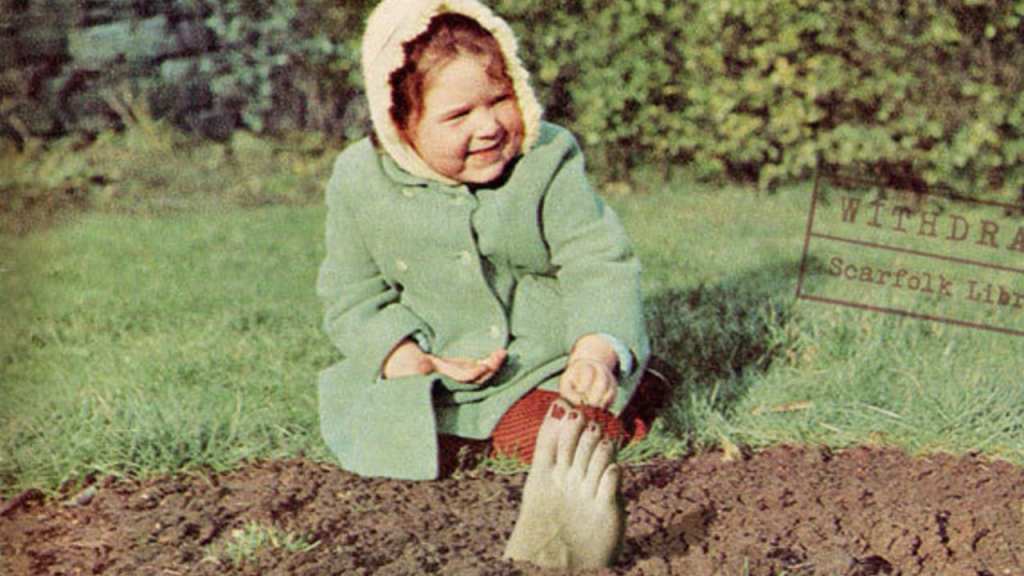Trending Now
The leaflet also says, “If you know any people, report them at once.” In Scarfolk, there’s a toy called “Mr. Liver Head,” and the school’s science book might look real…except for the chapter on how to wash a child’s brain.

Like most creations, Scarfolk’s particular brand of paranoia didn’t come out of nowhere – it’s inspired by Littler’s own perspective on growing up in the ’70s. He remembers feeling there was evidence of a terrifying real world everywhere he turned – public service announcements in which children were run over while playing on the train tracks, and stories in legitimate newspapers about botched surgeries and ghosts taking their revenge on the living.


“[I was] always scared, always frightened of what I was faced with…Paranormal subjects were treated as fact by the media. There were unsettling reports of violent poltergeist haunts in suburban homes. As a child, there seemed to be – to me, at least – scant difference between the natural and the supernatural.”
That bend toward the supernatural rears its head in Littler’s Scarfolk in a few different ways, but it is never acknowledged as anything strange – not the thought-detector vans, the dream recordings, or even the telekinetic child-owls who screech at misbehaving families. He’s also created a couple of hybrid entities – “Charlie Barn,” a creature with a baby’s head and spider legs that hypnotizes toddlers through the television (Caillou, anyone?), and the “Horned Deceiver,” a large, shaggy beast with a pentagram on its forehead.
While these odd, more fantastical elements abound in Scarfolk, it’s the ones that tiptoe closer and closer to reality that caught my attention.
For example, the town has an initiative to hand out “Foreigner Identification Badges” to all immigrants in the town.

But that’s not all. The Scarfolk Council also once approved a “Human Rights Lottery,” requiring citizens to “win the right to be acknowledged as a human being,” and once they also outlawed facts. Since, you know, no one really uses them anymore.

Sound familiar? It does to Littler.
“It had not been my intention at the outset to toy with the boundary between the 1970s and today. I thought it might be interesting to mirror/juxtapose modern-day events using ephemera of the 1970s – a decade the values of which we are supposed to have transcended.”
Key words: supposed to have.
Littler continues, talking about events that have happened around the world in the past year or so:
“…world events and politics have slid away from the suggestively dystopian toward the blatantly and unashamedly dystopian. Not a day goes by without some political event or figure rivaling the absurdity of anything a satirist can create.”
If you think this is all pretty amazing (as a writer of fiction, some of it dystopian, I certainly do), you’ll be happy to know that Littler has penned a book titled Discovering Scarfolk, and he is working on developing a corresponding television show, as well.
Pretty soon, the line between fantasy and reality may no longer exist at all. And what will all of the writers do then?
h/t: Atlas Obscura






